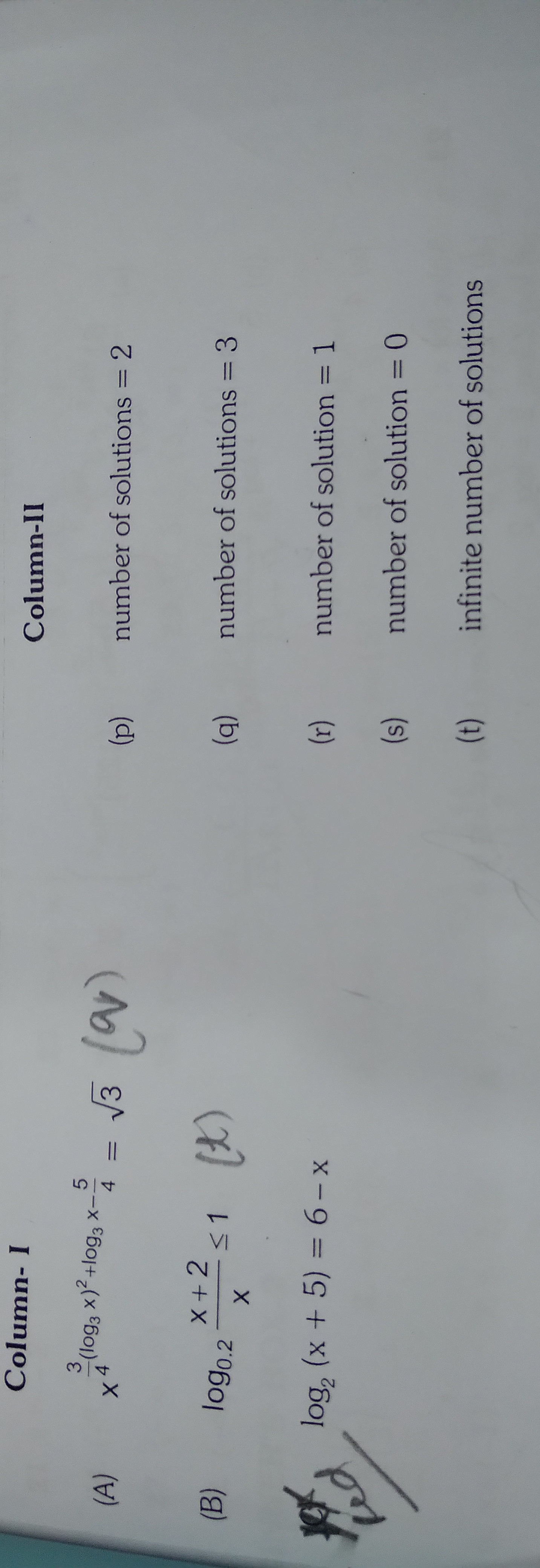Question
Question: Column-I | Column-II :--- | :--- (A) $\frac{3}{x^4}^{(\log_3 x)^2 + \log_3 x} = \sqrt{3}$ | (p) numb...
| Column-I | Column-II |
|---|---|
| (A) x43(log3x)2+log3x=3 | (p) number of solutions = 2 |
| (B) log0.2xx+2≤1 | (q) number of solutions = 3 |
| (C) log2(x+5)=6−x | (r) number of solution = 1 |
| (s) number of solution = 0 | |
| (t) infinite number of solutions |

(A)-(r), (B)-(t), (C)-(r)
Solution
For (A): Let y=log3x. The equation becomes x43y2+y=3. Taking log3 on both sides: (log33−log3x4)(y2+y)=log33 (1−4log3x)(y2+y)=21 (1−4y)(y2+y)=21 y2+y−4y3−4y2=21 −4y3−3y2+y=21 8y3+6y2−2y+1=0. Let f(y)=8y3+6y2−2y+1. f′(y)=24y2+12y−2. The roots of f′(y)=0 are y=48−12±144−4(24)(−2)=48−12±144+192=48−12±336. Since f′(y) has two real roots, f(y) has local extrema. f(y)→∞ as y→∞ and f(y)→−∞ as y→−∞. The discriminant of the cubic is positive, indicating one real root. Thus, there is one real value for y, which means one real value for x. So (A) matches (r).
For (B): Domain is xx+2>0, so x∈(−∞,−2)∪(0,∞). log0.2xx+2≤1. Since base is 0.2<1, we reverse the inequality: xx+2≥(0.2)1=51 xx+2−51≥0 5x5(x+2)−x≥0⟹5x4x+10≥0⟹5x2(2x+5)≥0. Critical points are x=−5/2 and x=0. The inequality holds for x∈(−∞,−5/2]∪(0,∞). Intersecting with the domain (−∞,−2)∪(0,∞), we get (−∞,−5/2]∪(0,∞). This set has infinite solutions. So (B) matches (t).
For (C): Domain is x+5>0⟹x>−5. Consider f(x)=log2(x+5) (increasing) and g(x)=6−x (decreasing). They can intersect at most once. By inspection, x=3: log2(3+5)=log28=3 and 6−3=3. So x=3 is the unique solution. Thus (C) matches (r).
